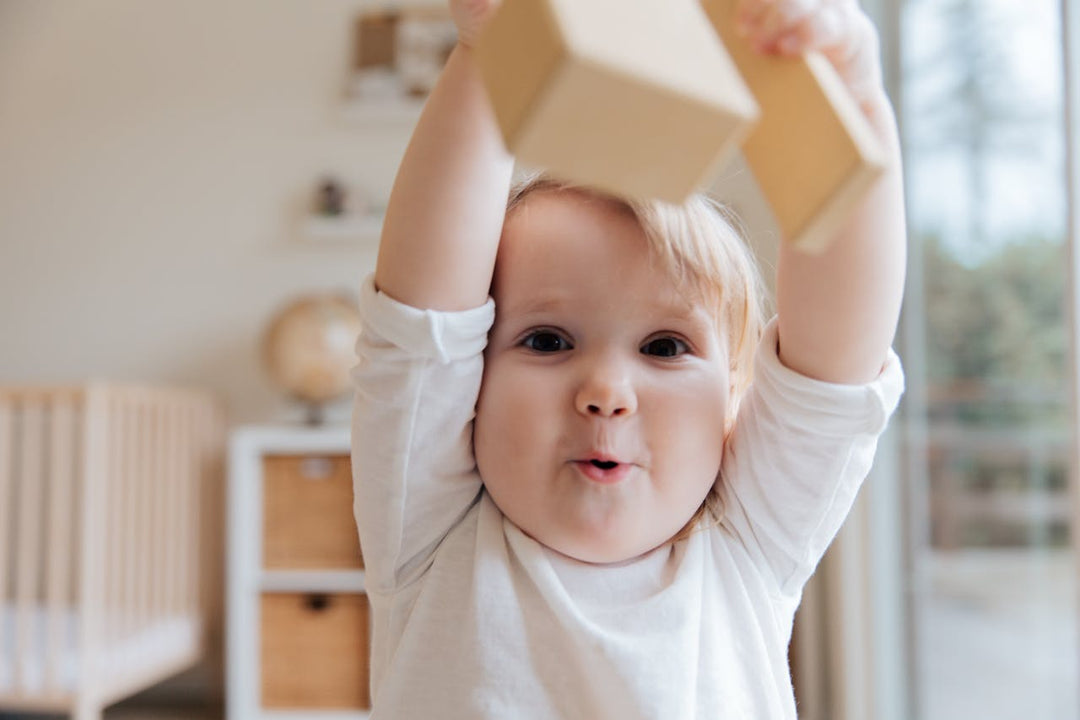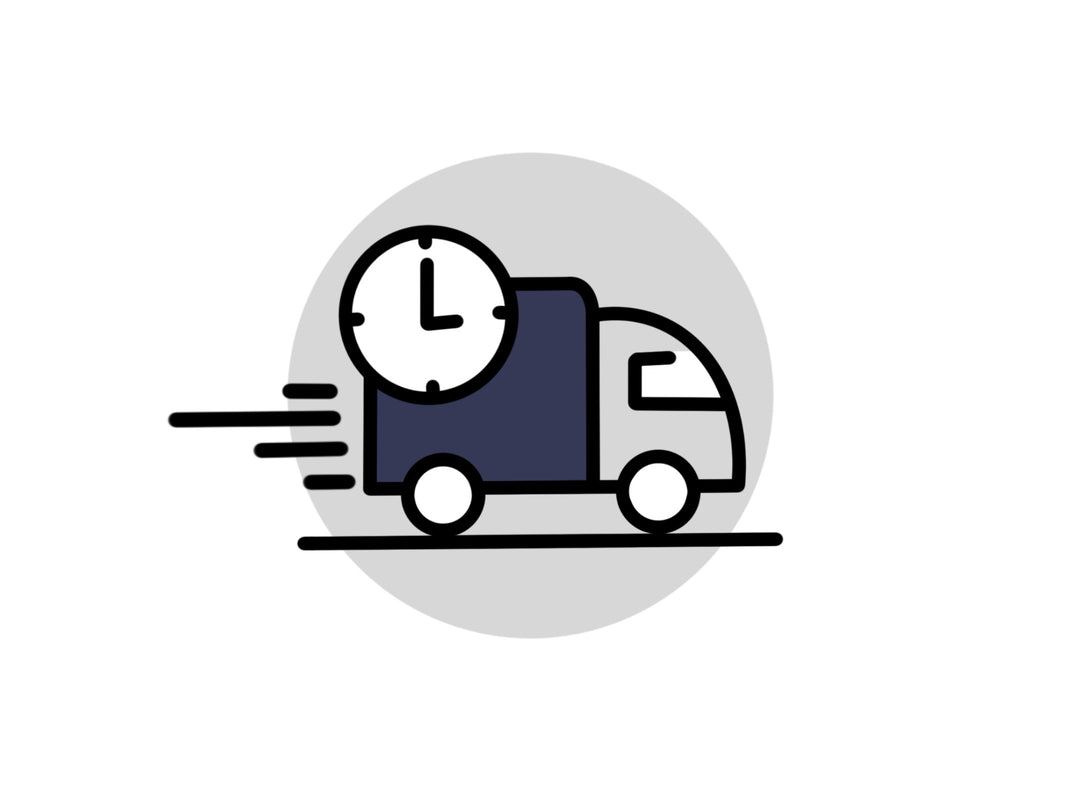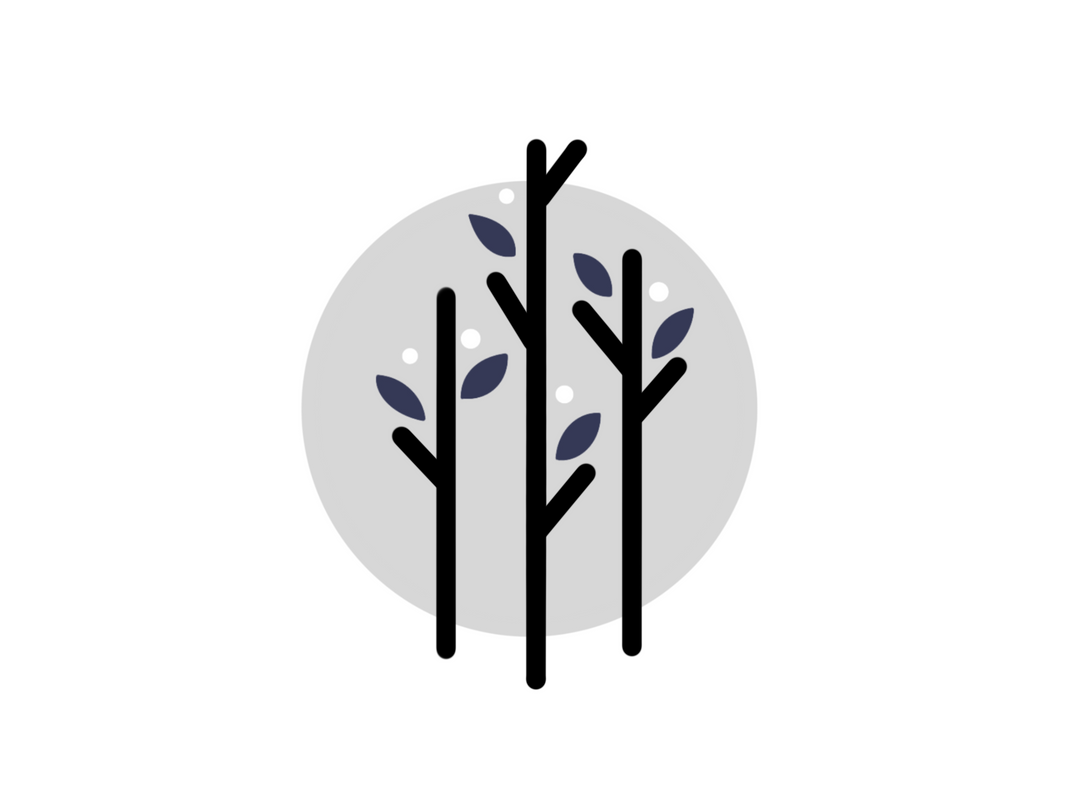The Top 7 Montessori Baby Toys (and Mobiles) Experts Agree You Need

As an Amazon Associate we may earn from qualifying purchases.
Introduction
Your baby’s first prepared environment is your loving arms. However, if you’re wondering what Montessori baby toys you need to give your baby for a true Montessori experience, no worries, we've done all the research for you!
We've been involved with the Montessori community for years now and are always discussing the newest and best items with the world's top Montessori experts. But, honestly, the most common idea is that the "best" items are the tried and true products that have actually been around for decades.
These traditional Montessori baby toys have been time-tested by generations of Montessori-inspired families, all with amazingly positive results. Each piece has a specific purpose in helping your new little one develop and grow physically, emotionally, and mentally.
Below is a quick list with links directly to the items. Or, just keep scrolling to learn about them all!
- Montessori Mobiles (Manuri, Octahedron, Gobbi, Dancer)
- Topponcino
- Faux Fur Rug
- Wood Toys (Interlocking Discs, Rattle, Teether Rings)
- Floor Mirror
- Grasping/Kicking Ball
- Black and White Image Cards
- Bonus Items!
The following items are best if used during your baby's first 6 months of life and they all have a specific purpose to your baby's growth and development.
1. Montessori Mobiles
Montessori inspired mobiles are perfect for stimulating your baby’s sight during the first few weeks of life. A wonderful tool to help your baby's development is to get an appropriate mobile that has been carefully designed to help your baby grow, both physically and mentally.
The typical and recommended Montessori mobile progression begins with a high contrast, black and white mobile. These are the easiest for your baby to see and comprehend while their eyesight is developing. They then move on to introduce primary colors, then hues of the same color, followed by movement. All these are explored in much more detail below.
At roughly the 3 months mark, you can introduce mobiles that encourage your infant to reach out and grasp it — a ball on a ribbon, a bell on a string, and a wooden ring on an elastic cord.
The progression makes sense and works congruently with an infant’s emerging abilities and interests.
Here is a list of all the Montessori mobiles to use during the first stages of life:
The Munari Mobile
(Age: 3-6 weeks old)

The Montessori Munari mobile utilizes the best practices of the Montessori education method for infants. Along with helping your baby learn to focus they will also start to learn to track objects, understand depth, and learn basic color differences.
This mobile features black and white-colored shapes that hang and turn. You could use any black and white mobile to meet the requirements. This Montessori mobile is especially great for the youngest of infants because of the distinct contrasts between black and white.
These contrasts are great for newborns because their eyesight is still developing. It provides them enough challenge to keep their concentration in those early weeks.
Here is a great DIY video by Hapa Family Vlog:
The Octahedron Mobile
(Age: 5-8 weeks old)

This mobile features three octahedrons that are typically the primary colors of red, blue, and yellow. The colors help your infant start noticing colors, without overstimulating them with many variations or shades.
An octahedron is made up of eight equilateral triangles, when viewed from below appear almost as a square.
However, the depth and the shape of the octahedron allows the child to begin coordinating their eyes together as they focus on the depth of the triangles.
Another great DIY video by Hapa Family Vlog:
The Gobbi Mobile
(Age: 7-10 weeks old)

Any color at all, this mobile features 5 balls of varying shades of one color such as green, yellow, red, or blue. The balls hang at a 45-degree angle and are hung from lightest and shortest to darkest and longest. Usually, the balls are made of embroidery thread or yarn.
This mobile helps your baby develop their depth perception with the varying lengths of string. Potentially even more important, the varying shades of a single color begin your child’s visual discrimination of shades and tones.
Here's a DIY video by Hapa Family Vlog:
The Dancers Mobile
(Age: 8-13 weeks old)

Potentially the most widely known Montessori mobile, this one features abstract “dancers” whose head, arms, and legs move independently.
The mobile is typically made with reflective or shiny paper, increasing your child’s visual development from the static colors of the Gobbi mobile. Further, the lightweight paper used causes the dancers to spin gently with any air movement.
This movement helps your child’ eye tracking ability and begins their understanding of cause and effect.
DIY video by Montessori for Babies:
Tactile Mobiles (Optional)
(Age: 12+ weeks old)

In addition to these mobiles, as your baby grows, remember to offer tactile mobiles that your baby can reach out and hold. You can also include themed mobiles such as animals, the moon and stars.
Here is a great Pinterest board to check out for inspiration ->
Mobiles are great items of interest for babies that will lead them to explore their world visually – one of the first ways they can truly explore and engage in their environment!
Want to learn more about the Montessori Mobiles? Read our full article here!
2. Topponcino
(Age: 0-6+ months old)

The topponcino is the perfect place for your newborn to rest, play, or be held. It is a Montessori pillow for infants that is shaped like an oval and is soft, yet firm.
You can use the topponcino all the time as a comfort item for your baby that keeps them warm and cozy.
In particular, the topponcino helps keep the scent and comfort of their mother always nearby. When the mother holds the baby in the topponcino, her scent is captured. Then, no matter who holds the baby, the smell of the mother is still there.
As your baby grows, you can use the topponcino as the perfect mat for tummy time.

The Montessori infant pillow is made of cotton and is filled with cotton batting. The batting is about 1-inch thick, which is the perfect amount of softness without being too plush to cause a safety hazard.
Topponcinos should come with a removable cover for easy cleaning.
With a topponcino, your baby will have a consistent fixture in their environment that will comfort and provide them the necessary support.
Click here to learn more about the topponcino ->
3. Faux Fur Rug
(Age: 0-1+ years old)

Image by The Kavanaugh Report
A faux fur rug is the simplest way to keep your baby warm and cozy when placed on the ground. When used in conjunction with a topponcino, your baby will always be comfortable, safe and clean.
The faux fur rug gives your newborn a personal place that they can always go. It also sets up a sort of "boundary" for older siblings so they know where they can and cannot sit and play.
As your little one begins to roll over, the faux fur rug gives some tactile feedback. They will be intrigued by the different texture the fur provides.
We highly recommend a "fake" version over a real sheepskin rug. This is mainly due to our desire to not hurt animals. Unfortunately, many small sheep are specifically bred to be a rug, and we do not like this as all.
You can get your own faux fur rug here ->
4. Wooden Toys
(Age: 2-8+ months old)

It doesn't take long until your baby will be wanting to grasp things and try to chew them. Getting a natural item to help babies with grasping and chewing is important. You do not want your infant chewing on non-natural ingredients! Grasping will help them with the all important tactile development.
Here are the 5 main Montessori infant wooden toys:
Wood Teether Rings

Wood Interlocking Discs

The wooden interlocking discs are a step up from the teething rings and a perfect representation of the simplicity provided by the Montessori method. Although minimal in design, these discs provide months of use.
Early on, the symmetrical discs help the child’s grasping skills and pincer grip without providing frustration with an intricate design. Later, manipulation of their environment can be explored by pushing and “rolling” the discs without the discs rolling frustratingly out of reach like a ball.
Even further on, the discs are a great tool to be transferred from hand to hand. The shape of the two discs is easily grasped by both hands at the same time and helps the child master bringing their hands to midline, an important milestone!
Wood Rattle

A great idea is the wooden baby rattle. The rattle poses a bit of a challenge in lifting, strengthening those little baby arms for future crawling.
Since the rattle is heavier than the previously mentioned discs, it should be offered when more grasping strength has developed in the infant.
Also, it makes noise when shaken, assisting your child’s knowledge of cause and effect. The smooth surface provides a pleasing sensation on the infant’s soft hands.
There are many different versions of the wooden rattle. We prefer the organic and ethically harvested wood. Many are made of maple or birch which makes a smooth toy for your baby. When shopping for a rattle, make sure to check the sealants used on the wood.
We prefer a vegan, organic coconut oil base. Not only is this healthy for your baby, but it is better for the environment and the animals. If you choose a colored rattle make sure the paint used is 100% non-toxic and water-based. All of this means that this rattle is perfectly safe for your little one.
Your baby can have endless hours of use out of this rattle and teether.
Wood Grasping Beads

Similar to the wood rattle, these grasping beads offer an alternative way for your baby to explore their new world. Since they are not specifically designed to make noise like the rattle, these grasping beads are meant to build hand strength and develop curiosity.
Your baby will put them in their mouth...which is great! Babies learn a ton through their mouths during the first few months of life. Offer alternative beads like the edged versus round only increases its effectiveness.
Wood Bell Roller

The final wood toy in the "baby series" is the wood bell roller. It's round design in made to roll (thus the name!) and encourages your baby to crawl after it. The bell inside encourages them to follow, peaking their curiosity, and helping them start those precious first forward movements.
It is important to give your baby the correct wood toy at the correct time. Giving them something too easy, won't keep them engaged. Giving them something too difficult, may be discouraging and frustrate them enough to not even try.
The wood bell roller is perfect when your baby keeps eyeing the toy when you roll it and has enough strength to start the "tummy scoot" towards it!
5. Montessori Floor Mirror

Children love to see themselves in the mirror.
The Montessori wall mirror is a great way to encourage movement and interactive play.
It teaches infants about cause and effects as they watch their movements in the mirror and allow a child to explore their body through visual touch and reaction in the mirror.
The mirror is typically a permanent fixture in Montessori classes and nurseries. Children love that mirrors are shiny, and the presence of one will keep them entertained for a long time.
Read "All You Need to Know about the Montessori Wall Mirror" ->
6. Grasping/Kicking Ball

Another common sight in the Montessori infant room and/or playspace is the kicking and grasping ball. These balls are specifically designed to help with grasping strength, as well as transferring skills from one hand to the other.
Dexterity is something that we learn throughout life and is a skill that can be taught. This Montessori ball is a "must have" if you want to help your child develop fine-motor skills.
7. Black and White Image Contrast Cards

Black and white image contrast cards (or objects) may seem boring to us adults, but visually they are very compelling to newborns.
Infants have poor eyesight when they are first born and often details of an object or picture are lost in the blur of their vision. This will reduce the likelihood that they are interested in dull colors or soft shapes.
Without interest, the infant will not focus on the item. The stark difference between large black and white shapes stand out, allowing the child to see it clearly.
The high contrast of the black and white stimulates the optic nerve of a child’s newly developing eyes, assisting in visual acuity and cognitive development.
Learn more about black and white baby images here ->
Bonus #1: Floor Bed

Image by Montessori Method
Instead of a crib, Montessori recommended that babies be given a floor bed. She wrote, in The Secret of Childhood:
“One of the greatest helps that could be given to the psychological development of a child would be to give him a bed suited to his needs and cease making him sleep longer than necessary…This is why we suggest that the typical child’s bed should be done away with as has already been done in many families. The child instead should be given a low couch resting practically upon the floor, where he can lie down and get up as he wishes.”
There are many versions of a floor bed. One option is to simply place a mattress on the floor. However, frames are also available, if you prefer.
The floor bed will help your child assert their independence as they grow, by giving them the ability to get into and out of bed on their own. Freedom of movement is paramount to the Montessori method.
Not restricting your baby to a crib allows the child to discover their movement and their environment from the very beginning of life.
Bonus #2: A Baby Wearing Wrap or Carrier

Image by Solly Baby
Did you know that Montessori supported the idea of a baby carrier or wrap? She wrote about them in the Absorbent Mind when she described how babies are kept very near their mothers in other cultures around the world. In her words:
“In almost all countries, the baby accompanies his mother wherever she goes. Mother and child are inseparable.”
This way, the baby sees and hears everything that their mother is doing. Being close to the parent helps a baby develop their senses, and particularly, develop their understanding of language.
For this reason, baby wraps and carriers were welcomed by Montessori. She believed that babies, just like older children and adults, thrive in social and active environments that are interesting.
She noted that, on a mother’s (or father’s) back, a baby can easily overhear their parent haggling in the market or having a conversation with a friend.
There is no one correct way to carry your baby. You may consider a wrap or another sort of baby carrier to use for your baby. The important thing is that your infant can participate in, see, and hear everything that is going on around them.
Bonus #3: Books with Real or Realistic Pictures

Reading with your child is one of the greatest ways to bond together and help them develop the skill of language. Reading to a child from the moment they are born is highly recommended! Soft books have been developed to read to newborns and aid their development.
Montessori encouraged parents and educators to teach children about the concrete world first. In other words, we should teach them about real things that they’ll see in the world around them.
This helps children understand their world and have a great base to work from before they delve into fairytales, Disney characters, and fantastical stories. The concrete stage lasts from birth until age 6.
Luckily, there are plenty of baby books that meet these standards. Find books that show real pictures of objects, such as different foods, animals, or people.
Also, books that have realistic pictures or beautiful artwork are great options. Search for baby books that have pictures of great works of art, or realistically illustrated books of songs.
Conclusion
With these 7 Montessori baby toys (plus bonus items), you’ll be ready to give your baby the best prepared environment possible.
You are the most important part of your baby’s prepared environment. Your love, support, and role as a teacher and guide will lead your infant into childhood and beyond. We wish you the best as you prepare for the arrival of your little one!
Are we missing anything? If so, we would love to hear from you. Please let us know!
Want to learn more? Check out our other Guides & Articles ->












